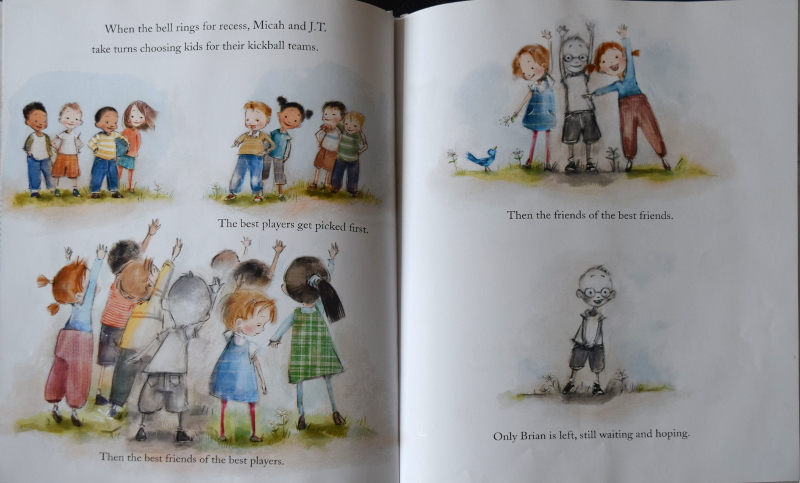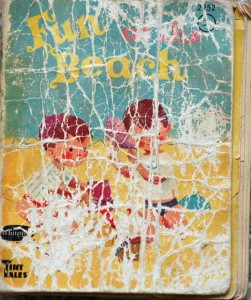Welcome to KidLit Gems!
Join us in a coffee style conversation about favorite children’s books and the elements that make them shine.
This month’s theme: Empowering Youth
 THE INVISIBLE BOY
THE INVISIBLE BOY
Text © 2013, Trudy Ludwig
Illustrations © 2013, Patrice Barton
Fiction
Age Range:
6-9 years
Grade Level:
First- Fourth
Grade
Alfred A.
Knopf
Books,
for Young
Readers
an imprint of
Random House
Kids
AWARDS
- 2013 Junior Library Guild Selection
- Starred Review, School Library Journal
- School Library Journal Best Picture Books 2013 Selection
- Scholastic Instructor Recommended Back-to-School Picks 2013
- USA Today Recommended Back-to-School Picks 2013
- 2013 NAPPA Gold Medal Winner
- The Children’s Book Review Best Picture Books 2013 Selection
- Missourian October Book Buzz Pick 2013
- Winter 2013-2014 Kids’ Indie Next List Selection
- Oregon Spirit Book Awards 2013 Short List Selection
- International Reading Association Teachers’ Choices 2014 Selection
- Kentucky Bluegrass Award 2015 Master List Selection
When the bell rings for recess, Micah and J.T. take turns choosing kids for their kickball teams. The best players get picked first. Then the best friends of the best players. Then the friends of the best friends. Only Brian is left, still waiting and hoping.
~ The Invisible Boy
I admit it: As a teacher, I sometimes lecture. I preach. I cajole. And in doing so, I risk losing my audience. Trudy Ludwig, however, spins a sweet story to sneak in her lesson of inclusiveness. In The Invisible Boy, Brian always seems to fly under the radar: Never picked for group work, never invited to parties, never really noticed despite his artistic talent and friendliness. It takes a new student’s arrival to change the class dynamics so Brian finally stops being so—invisible.
I’m normally a text-focused reviewer, but Patrice Barton’s illustrations really step up to enhance this story. When Brian feels sidelined, he’s drawn in black and white, contrasting wonderfully next to his colorful classmates. Each time he’s actually noticed or interacts with others, color starts to blossom on his cheeks. It’s a simple but effective technique to catch our eye and evoke sympathy for Brian. The ending is that much more satisfying when we finally get to see Brian in full, blessed color like the other kids.
Whether you’re hoping to teach inclusiveness, celebrate quiet talents, or just enjoy a story with heart, check out The Invisible Boy and feel your own color start to blossom.
~ Lou
___________________________________________________________________

Brian looks at the floor, wishing he could draw a hole right there to swallow him up.
~ The Invisible Boy
Everyone wants to be noticed. That’s why Nathan talks in his outside voice, why Sophie is a drama queen, and why the teacher can’t see past Nathan and Sophie. All of them are competing to be heard. But Brian has a bigger problem. He’s too introverted to demand attention. He’s the invisible boy.
Haven’t we all felt invisible?
Author Tracy Ludwig offers a solution, but it requires a risk. This risk entails looking outside of ourselves. Ludwig reminds young readers, old readers, introverts, and extroverts that happiness is accessible when we share the good that is within.
Illustrator Patrice Barton makes kids like Brian visible with humor and gentleness. Her images don’t reprimand, pity, or condescend. I like to imagine that her other tenderly-drawn characters, like those in Mine and I Like Old Clothes are the family members of Brian and his class–all on their own journey of acceptance.
The Invisible Boy and Ludwig’s other psychologically smart stories, like Confessions of a Former Bully and Gifts From the Enemy offer creative resources to replace isolation, exclusion, and aggression with companionship, empathy, and kindness. Children love Ludwig and her stories, because she understands. Parents and teachers, and counselors love Ludwig and her stories, because she empowers.
Who’s invisible in your life? Is it you? You’ll find a friend in The Invisible Boy.
~ Anna
Watch for my gem next week!
We want to hear from you!
What empowering children’s book do you recommend?








